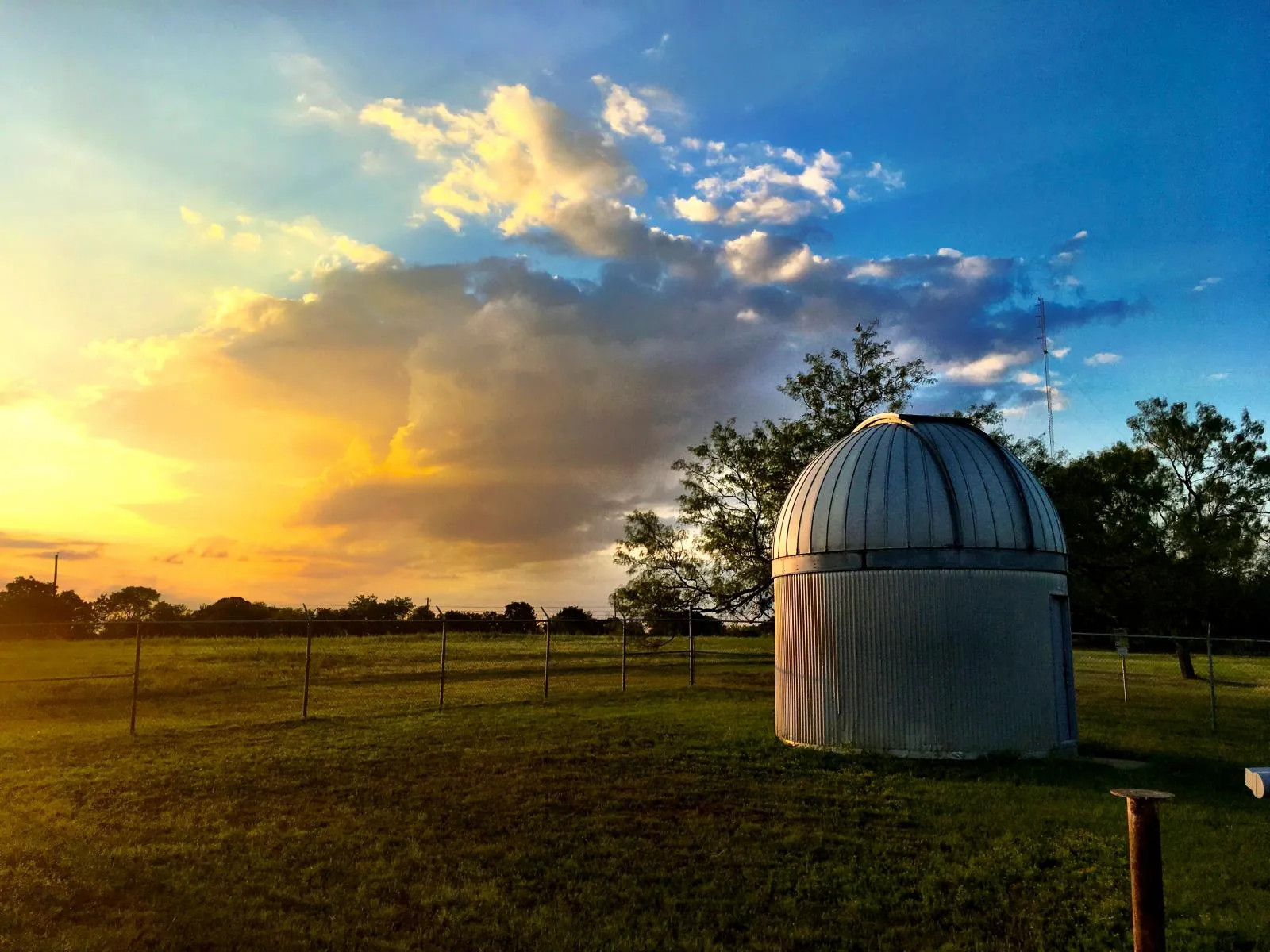Homepage
/
News
/
Southwestern Adventist University Updates Thomsen Observatory Students And Community
Southwestern Adventist University Updates Thomsen Observatory for Students and Community
May 22 2019 - 5:00am
By: Dr. Lindsey Gendke
Stargazers from amateurs to experts have enjoyed the well-used resource in Johnson County: the Eugene V. Thomsen Observatory at Southwestern Adventist University. Thanks to the contributions of numerous faculty, volunteers, and donors, the university has undertaken a multiphase project to update the observatory and expand the program to meet increasing levels of community interest. Now, with anew 10” Thomas Back APO Chromatic telescope, mount, lenses, and cameras, and the options of either astrophotography or eyepiece viewing, the experience at the Thomsen Observatory is bigger and better than ever.
It was in the spring of 2018, after a period of renovation and updating, that Southwestern Adventist University reopened the observatory with its first of many “star parties” where guests may view planets, nebula, star clusters, and the lunar landscape. Retired educator and star enthusiast Jerry Becker notes that attendance at these openings and requests for additional observing times for specific interest groups has been remarkable.
Becker shares that “the Thomsen Observatory is a hidden gem that can be a great asset to education, from elementary to university level.”
Community Opportunities and Education
Since its reopening, the observatory has had active participation with several public and private elementary schools in Cleburne, Joshua, and Keene, as well as with Scouting troops, church youth groups, and others. The Friends of the Observatory (FOTO) have also worked with the astronomy clubs of Arlington and Fort Worth and have connections with multiple observatories within the region.
In addition, astrophotographers in the Metroplex are reaching out to the Observatory requesting to reserve time on the scope for photographing the night sky. The telescope promises excellent viewing with a quality and capability beyond what a backyard set up offers.
State-of-the-Art Equipment
The Thomsen-Hall telescope, an imposing 10” TMB apochromatic refractor (254 mm lens), grants exceptional deep-space vision, using all the light that enters to provide direct views of planets, stars, and nebulae. A CMOS camera, lenses, filters, and viewing screen support the refractor’s capability.
Additional portable telescopes, including the Dickerson Meade 178-ED APO refractor and the Bo Walker Coronado Max- 70 H-alpha sun telescope, extend viewing during star parties and other special events.
History and the Observatory’s Host of Supporters
Founded in 1984 through the generosity of alums Dennis and Connie Dickerson, the Thomsen Observatory became popular under the direction of physics professor Roy Campbell. Current interim observatory director Cristina Thomsen remembers that in the 1980s and 1990s, “people came in droves” to see the stars.
The 20” mirror in the original Ritchie-Cretien reflecting telescope drew scholars, astronomy buffs, and school groups. In addition, about 80 students a semester filled Campbell’s general education astronomy courses; other students signed up for independent study with Campbell to assist with research on star patterns.
When Campbell left the university in 2000,the observatory eventually closed to the public due to a void of leadership and management. However, various faculty, alumni, community volunteers, and donors rallied around the cause over the years to bring the observatory back to life.
University president Ken Shaw states that the university is grateful for the dedication and generosity of the many individuals and groups that have allowed the observatory to flourish once again. Cleburne area supporters include amateur astronomers Eugene Ulrich of Ulrich Barns, Brad Riza (grandson of Cleburne’s Riza Manufacturing founder, now serving as a star guide in Badlands National Park), local high school teacher Sharri Harris, and observatory founder Dennis Dickerson.
Going Forward
With continued support and funding, the observatory team hopes to purchase additional supplies and software that will improve astrophotography and group viewing capabilities, and enhance site access for all, so interested individuals may investigate celestial wonders from Southwestern Adventist University.
In the spirit of the observatory’s namesake, Eugene Thomsen, a much-loved language professor who “was passionate about learning of all kinds,” the observatory is for anyone who loves to learn new things, see new sights, and “reach out to something bigger than oneself,” says his daughter, Cristina Thomsen.
The Thomsen Observatory is a vital part of Southwestern Adventist University’s impact on north Texas. Now, thanks to the support of many, stargazers of all stripes can be found once again beholding the wonders of heaven on a hillside in Keene.
Visit, or Befriend, the Observatory
Potential observers are reminded that all events are free, and visitors are welcome to bring their own telescopes and chairs. For more information on upcoming events, or to view a gallery of photos including the Orion Nebula and the M3 star cluster visit www.swau.edu/observatory. To become a Friend of the Thomsen Observatory (FOTO), visit swau.edu/give or contact the Development Office at 817-202-6231. You may also make observatory inquiries or donations by email or phone at observatory@swau.eduor 817-202-6573.
